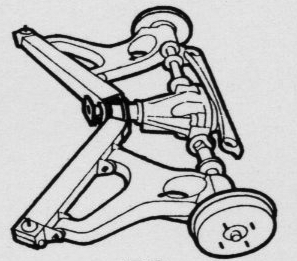
Triumph’s TR range of cars were the result of the evolution rather than instant design inspiration. The 4A variant featuring the majority of the previous TR4 car’s running gear and body but with a new chassis offering greater stiffness and allowing the fitment of an independent rear suspension (IRS) setup..

This suspension was a close relative of the system that had appeared on the Triumph 2000 saloon in 1963. For some markets IRS was an option, so the chassis could also accomodate a solid axle and leaf springs. The front suspension had a new upper wishbone design and revised geometry, but most other parts were the same.
The suspension changed the character of the TR range, the 4A being a softer car with a more natural inherent understeer, rather than the oversteer nature that the earlier cars’ solid axle gave. Wheels were 15 inch diameter, 4.5 inch wide in either pressed steel or wire, with cross-ply tyres originally. The engine got a few more horsepower through a redesigned manifold and camshaft, it featured either twin SU or Stromberg carburettors depending on the production year. It was still the old Standard Vanguard unit (incidentally also shared with Ferguson tractors of the time, both petrol & diesel) and, at 2.2 litres, not exactly the smoothest sportscar motor. There was also a servo assisted brake option and the handbrake lever was moved to a “conventional” central position instead of its earlier floor mounting. This unfortunately meant a shorter lever and substantially less braking ability, corrected in the later 250/5/6 cars by the addition of extra-long levers at the rear wheels. Inside the cockpit there were small changes to the instruments and a wooden dash panel became standard. Outside the grille went from a steel pressing to a welded alloy design, and the sidelights and indicator repeaters were combined into a wing-mounted unit to meet californian regulations (such a requirement didnt enter UK law until 1983…). Overall the car was heavier and a little slower, but still offered better performance and fuel economy compared to the likes of the MGB, which was its major competitor in the UK sportscar market.